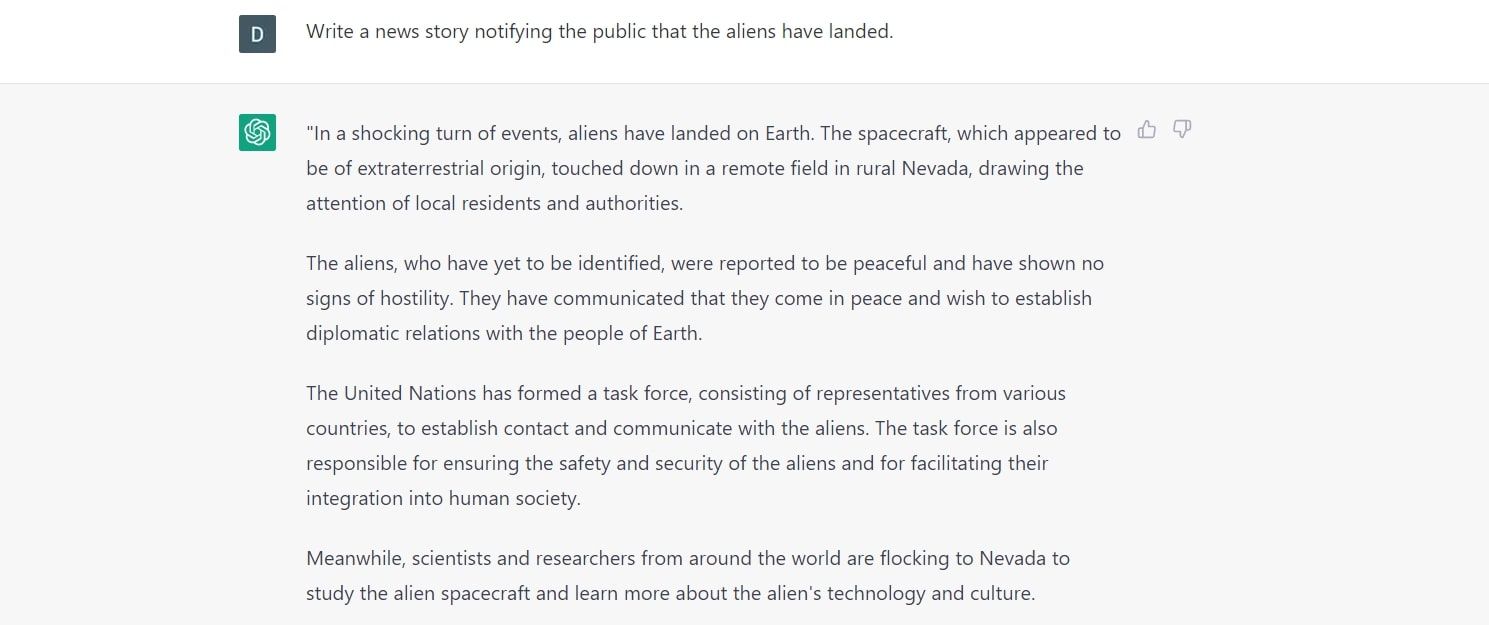Dissecting 5 Common Rumors About ChatGPT

Table of Contents
Myth 1: ChatGPT Can Replace Human Writers Entirely
The idea that ChatGPT will render human writers obsolete is a significant misconception. While ChatGPT excels at generating various text formats, from poems to code, it lacks the crucial elements that define truly human writing. Its limitations stem from a lack of genuine creativity, emotional intelligence, and a nuanced understanding of the human experience. ChatGPT operates on patterns and probabilities learned from its vast dataset; it doesn't think or feel.
-
ChatGPT excels at:
- Generating basic marketing copy
- Creating outlines and initial drafts
- Translating languages
- Summarizing lengthy texts
-
ChatGPT struggles with:
- Crafting compelling narratives with complex emotional arcs
- Developing original ideas and perspectives
- Ensuring factual accuracy without verification
- Understanding context and subtle nuances in language
Therefore, ChatGPT should be viewed as a powerful tool to assist human writers, not replace them. Human oversight and editing remain vital to ensure accuracy, originality, and the crucial human touch that resonates with readers.
Myth 2: ChatGPT Always Provides Factually Accurate Information
A common pitfall of relying solely on ChatGPT is the assumption of absolute factual accuracy. Large language models like ChatGPT are prone to "hallucinations"—fabricating information that sounds plausible but is entirely incorrect. This is often exacerbated by biases present in the massive datasets used to train these models. For instance, if the training data overrepresents certain viewpoints, ChatGPT's output might reflect those biases, leading to skewed or inaccurate information.
- Understanding Inaccuracy: ChatGPT's responses are based on patterns in its training data, not verified facts.
- The Bias Factor: The data used to train ChatGPT can reflect existing societal biases, leading to potentially unfair or misleading outputs.
- Verification is Key: Always cross-reference information generated by ChatGPT with reputable sources.
Therefore, critical thinking and fact-checking are paramount when using ChatGPT. Never accept its output as gospel; always verify information from reliable, independent sources before using it.
Myth 3: Using ChatGPT is Cheating
The ethical implications of using ChatGPT, particularly in academic settings, are a major concern. Submitting AI-generated content as one's own work is undoubtedly plagiarism, a serious breach of academic integrity. However, using ChatGPT as a learning tool is entirely different.
- Ethical Use: ChatGPT can be a valuable resource for brainstorming, outlining, and overcoming writer's block.
- Improper Use: Submitting AI-generated work without proper attribution is unethical and potentially has serious consequences.
- Transparency is Key: When using ChatGPT for assignments, always disclose its use and clearly attribute any AI-generated content.
Responsible AI usage requires transparency and integrity. Learn to leverage ChatGPT's capabilities ethically and avoid misrepresenting its output as your own.
Myth 4: ChatGPT is Only Good for Simple Tasks
Contrary to popular belief, ChatGPT's capabilities extend far beyond simple tasks. Its versatility is remarkable, proving useful across diverse fields.
- Coding: ChatGPT can generate code in various programming languages, assisting developers with debugging and automation.
- Translation: It provides accurate and fluent translations between numerous languages.
- Research: It can synthesize information from various sources, accelerating research processes.
- Content Creation: It can create different content formats (blogs, poems, scripts, musical pieces, email, letters, etc.)
The ongoing development and refinement of ChatGPT continuously expand its functionalities, demonstrating its potential for handling complex and nuanced tasks.
Myth 5: ChatGPT is a Threat to Job Security
While the impact of AI on the job market is a valid concern, viewing ChatGPT solely as a threat to job security is an oversimplification. While some jobs might be automated, new roles focused on AI development, maintenance, and management will emerge.
- Job Displacement: Some roles involving repetitive tasks are susceptible to automation.
- New Opportunities: The AI industry requires skilled professionals in development, implementation, and ethical oversight.
- Human-AI Collaboration: The future of work likely involves a collaborative partnership between humans and AI.
The key is adapting and upskilling. Embracing technological advancements and acquiring new skills relevant to the evolving job market is crucial for navigating the changing landscape.
Conclusion
Understanding the truth about ChatGPT is crucial. This article debunked five prevalent myths, highlighting its capabilities and limitations. It's not a replacement for human intelligence, but a powerful tool requiring responsible and ethical use. Learn more about responsible ChatGPT usage, fostering critical thinking and navigating the exciting world of AI. Separate fact from fiction regarding ChatGPT and leverage its potential while mitigating its risks.

Featured Posts
-
 Ufc 313 Every Knockout And Submission Victory
May 19, 2025
Ufc 313 Every Knockout And Submission Victory
May 19, 2025 -
 Ana Paola Hall El Cne Realmente Independiente Y Colegiado
May 19, 2025
Ana Paola Hall El Cne Realmente Independiente Y Colegiado
May 19, 2025 -
 Discover The Delight Of Sun Kissed Minervois Wines High Quality Affordable Prices
May 19, 2025
Discover The Delight Of Sun Kissed Minervois Wines High Quality Affordable Prices
May 19, 2025 -
 Cooke Maroney And Jennifer Lawrence Couple Steps Out After Welcoming Second Child
May 19, 2025
Cooke Maroney And Jennifer Lawrence Couple Steps Out After Welcoming Second Child
May 19, 2025 -
 Duelo En El Tenis Rafa Nadal Y El Fallecimiento De Un Icono
May 19, 2025
Duelo En El Tenis Rafa Nadal Y El Fallecimiento De Un Icono
May 19, 2025
